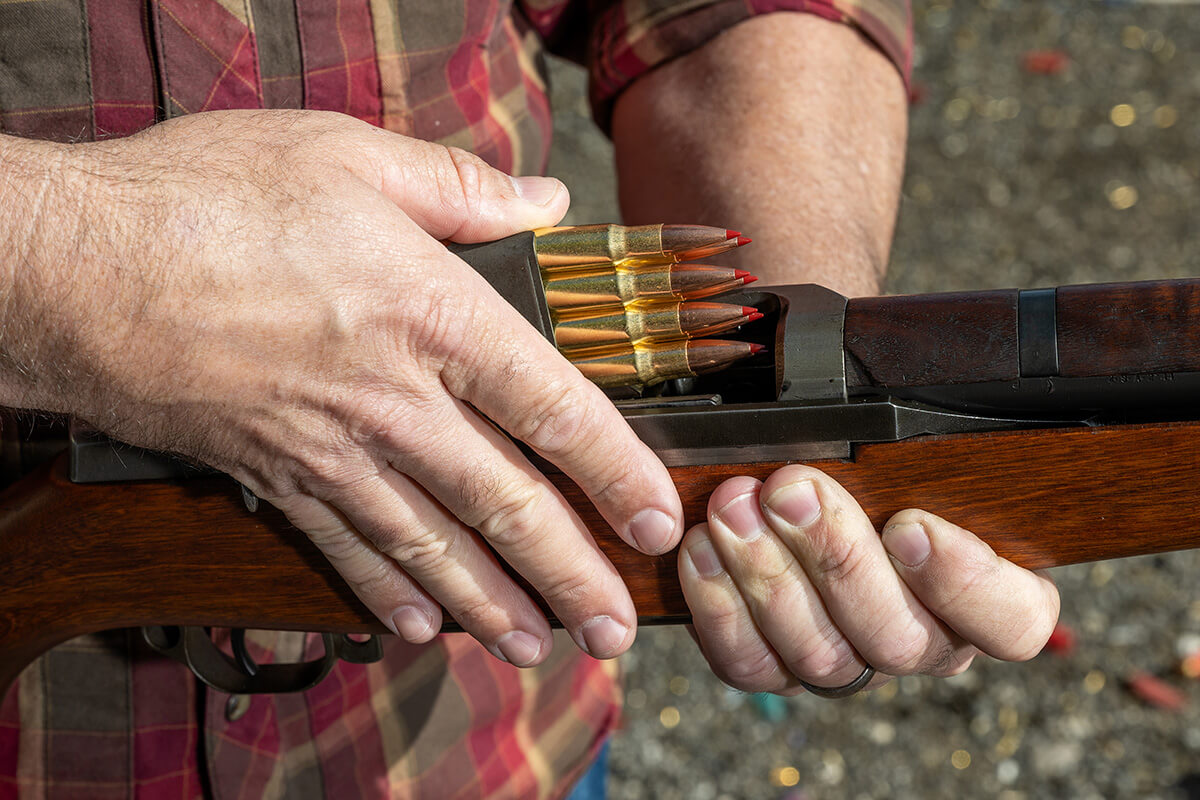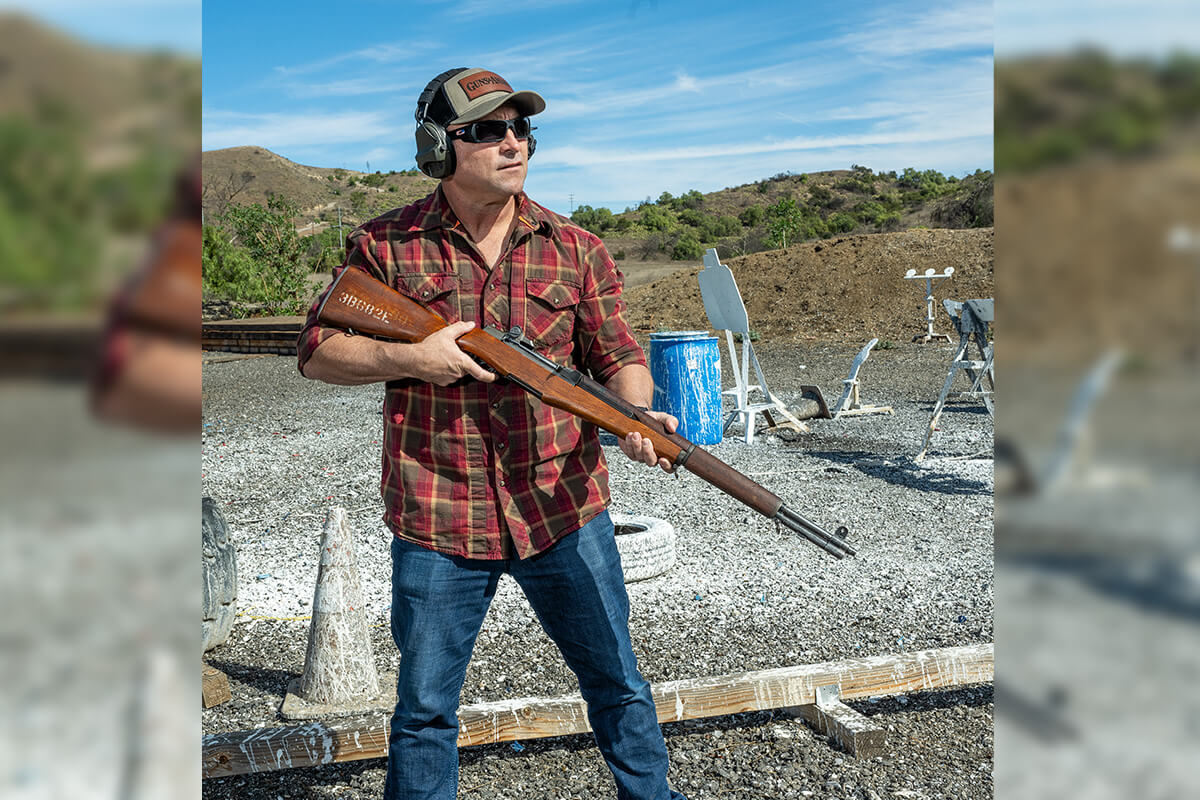Hornady understands that for many of us, the Greatest Generation wielded tremendous influence over our firearms journey. Grandfathers, great uncles, and all the other great men, and many women, from that generation were often introduced to guns and shooting at a very young age as a means of sustenance and defense. Later, those men carried the M1 Garand rifle, chambered in .30-’06 Springfield into combat, from the fields of Normandy during World War II, to the hellish snowscape of Korea’s Chosin Reservoir. From 1941 to 1945, and then again from 1950 to 1953, the Garand was the American fighting man’s best friend. When those veterans came home, they often purchased their own Garand for shooting, competing and defense, much like today’s veterans do with the AR platform. There is comfort in familiarity.
The history of the military’s .30-’06 round is more colorful than the history of the Garand itself and deserves an article of its own. To summarize, though, the .30-’06 (.30 Caliber Ball, Model 1906) was an improved version of the .30-’03 (.30 Caliber Ball, Model 1903). The flat based 220-grain projectile of the ’03 was replaced with a flat based 150-grain projectile that was supposed to push the round beyond 4,000 yards for use in indirect fires. Experience in World War I proved this theoretical range to be garbage. Our soldiers struggled against Germans armed with a boattail 8mm round so, when the war ended, our engineers did what engineers do and shamelessly stole the German idea. This is where the .30 M1 Ball round was born. The engineers gave the 174-grain bullet a 9-degree boattail, played with the ogive a bit, and loaded it with the then-new IMR 1185 propellant, giving the new round a velocity of 2,647 f.p.s. and a legitimate indirect-fire range of 5,500 yards. They also improved the jacket material leading to less maintenance issues and greater accuracy standards. In fact, the M1 ball accuracy standard called for a maximum of 4.5 inches at 500 hundred yards and a maximum of 5.5 at 600 yards. That’s less than 1 MOA in 1926.
Of course, the bean counters had to muck this up. The new round was found to be too effective, meaning that it was often a bit more than the existing rifle ranges in the military could handle, zipping through berms and sailing into adjacent properties. Rather than fortify existing ranges, it was decided that they just needed to neuter M1 Ball a bit. They utilized the new technology, including IMR 4895 along with a flat based 152-grain projectile to basically duplicate the early 1906 round. The resulting cartridge also saw a reduction in accuracy, down to 6.5 inches at 500 yards and 7.5 inches at 600 yards. If that’s not a prime example “Big Army” bureaucratic thinking, I don’t know what is. Regardless, M2 Ball served long enough to put plenty of Nazis and Communists in the dirt, with a service life spanning from 1937 until the last Garand was pulled from National Guard armories in the 1970s.

Today, surplus rifle matches are gaining traction, M1 Garands are selling out of the CMP as fast as they can get them cleaned up and graded, and stockpiles of M2 Ball ammunition are dwindling rapidly. Seizing the opportunity, Hornady has decided to step into the breach. The Hornady .30-’06 Springfield load, topped by a 168-grain ELD Match bullet, is part of the company’s Vintage Match series that also includes 196-grain BTHP load for the 8×57 JS Mauser cartridge. The Hornady M1 Garand load isn’t a duplicate of any actual military load, but it is the spiritual successor to the venerable M1 Ball load that Marine snipers coveted throughout the Vietnam War.
Hornady understands that the Garand needs ammunition that is tuned to its gas system. Modern performance .30-’06 loads are optimized for bolt guns, not gas guns, so modern ammo can be unduly harsh on Grandpa’s M1, which is nearing 100 years old by now. Hornady’s Vintage Match load offers pressure similar to the older M1 cartridge, and provides a nominal velocity of 2710 f.p.s. out of a 24-inch barrel. This puts the Hornady load in the same ballpark as M1 Ball, which was getting around 2650 f.p.s. with that 174-grain pill versus the Hornady’s 168-grain projectile. The match load’s ballistic coefficient (BC) outclasses the M1 ball load, at .523 (G1) versus the legacy loads .494 (G1), so reaching out to the Garand’s realistic limits shouldn’t be a problem.

To test the load, I used my personal M1, a mostly matching Springfield Armory rifle manufactured in February 1944. Despite being restocked, the gun appears mostly matching with the original barrel in place. The barrel is serviceable, but this isn’t a match rifle, and its most accurate days are behind it. To establish a baseline for performance, I shot a few groups through it with some Danish M2 Ball that I had squirreled away from my gun show days. The Danish M2 ball had come pre-loaded in MBZ en-bloc clips from the Netherlands, so I knew that it was quality throughout. The Danes used the Garands received from the United States in the 1950’s all the way into the early 1990’s, so the 1980 manufactured M2 Ball makes sense.

I wish I could tell you that my M1 was a tack-driving son of a gun, but 4- to 5-inch groups were the order of the day with the combination of the surplus M2 ball, the original barrel and my eyes. The good news is that the Hornady Vintage Match ammo performed splendidly, averaging 3.2 inches and giving me one group of 2.5 inches. The ammunition delivers as promised and was as smooth shooting as it was accurate. With a match barrel, I have no doubt that the ammo is sub-minute capable.
I tend not to wax poetic about personal guns, and I don’t have a long list of guns that I really want “just because.” At the top of that list though, is an M1 Garand worked over in the style of the CMP shooters of the 1960’s. Men that knew the rifle and knew how to shoot it owned the line back then. This Hornady ammo has me thinking that one of those rifles just might find its way into my safe soon.
Read the full article here


